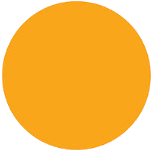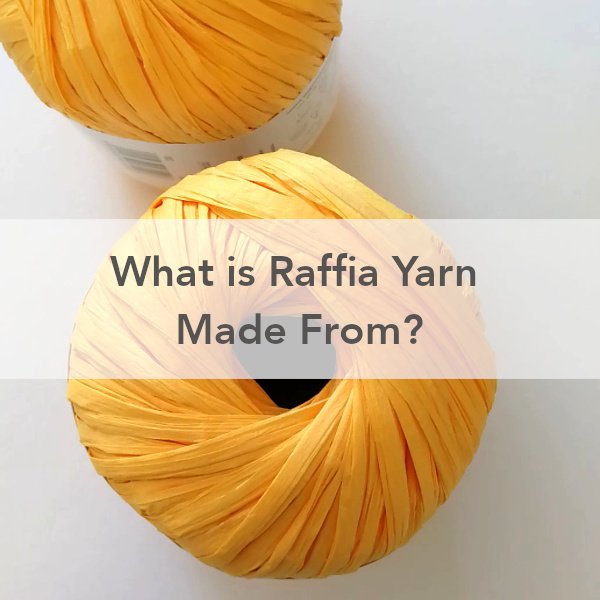What is the Difference Between Linen, Cotton and Hemp
In this article, I take a deep dive into three sustainable yarns to find out what the difference is between linen, cotton and hemp. Let’s really compare all three to find out which is better for crafting, the environment and our future.
It’s no secret that my favourite out of the three is hemp. Most of my crochet patterns are made with this wonderful fibre and I love using hemp yarn for crochet for so many reasons but is my obsession justified? Let’s find out.
Characteristics Comparison
What Are They?
All three are plant based fibres. Hemp and linen are produced from the stalks of the hemp and flax plants respectively and cotton is made from the fibrous flower.
Both hemp and linen are both old crops with a long history of being grown for fibre. They both reportedly date back to around 8000BC and cotton is relatively new in comparison having first been produced in 3000BC.
Where Are They Grown?
Linen and hemp are grown in various places around the world and they can both be grown in a variety of soils (even poor soils) and temperatures (they are frost tolerant). Which means that they can be grown closer to home, wherever that may be, which in turn saves a lot of energy on transportation.
Cotton on the other hand needs to be grown in warmer climates and in specific soil (sandy loam with a pH between 5.8 and 8). This means it needs to grow in specific areas such as India and Texas which means it needs to be transported further.
How Water Intensive Is The Cultivation?
What is the difference between linen, cotton and hemp in terms of water consumption? I’m sure we’ve all heard that cotton is more water intensive compared to linen and hemp but by how much?
Hemp needs roughly 30-40cm of water per season to produce a crop. Cotton on the other hand, depending on where it is grown, needs between 20-50 inches of water per season per crop. I was unable to find a definitive answer for linen but the figures I was finding were comparable to hemp.
The other difference here between the two is that both hemp and linen use only rainwater. This is enough to produce a good yield but cotton needs irrigation due to it being grown in warmer climates where rainfall is not readily available.
Are They Grown Organically?
Both hemp and linen don’t need pesticides to grow however, unfortunately, this doesn’t stop them from being used. Most non organic linen is grown using nitrates which get into the water streams and harm our ecosystems and non organic hemp is grown using damaging fertilisers.
Similarly with cotton, non organic is grown using pesticides. In fact 50% of the worlds pesticides are used in the production of cotton!!
How Strong Are The Fibres?
As mentioned before, hemp and linen are produced from the stalks of the plant meaning fabrics and yarns are made from longer strands of fibre resulting in a stronger end product that will last longer. Hemp is longer than flax and cotton and it is reported that hemp is 8 times stronger than linen and 4 times stronger than cotton, making it an all round better fibre for crafting.
Because of its strength it can also be used for many different purposes other than fabrics and yarns. It can be made into concrete (hempcrete) and other composite materials to be used in the manufacturing of cars and has also been used for military uniforms, baggage, parachute webbing, ship rigging, skate desks and more. According to the North American Industrial Hemp Council, hemp can be used to make 25,000 products
What is the Difference Between Cotton, Linen and Hemp in Terms of Yield
In total hemp needs less land to grow larger amounts of hemp. It is able to produce more tonnes per hectare than both linen and cotton. Hemp produces around 4 to 12 tonnes per hectare, linen 6 to 7 tonnes and cotton 2 to 4 tonnes.
The Capture Of CO2
According to the European Industrial Hemp Association one hectare of industrial hemp can absorb 15 tonnes of CO2 per hectare and it is possible to grow two crops per year, so 30 tonnes per year per hectare. The cultivation of one hectare of flax captures around 3.7 tonnes.
Non organic cotton falls short here in that it releases CO2 rather than sequestering it. According to the Soil Association, “A Life Cycle Assessment of conventional (non-organic) cotton concluded that 1 tonne of cotton fibre produces 1.8 tonnes of CO2 emissions”
Decomposition
Are they all biodegradable and can they be composted? This is one of the reasons I love using natural fibres so much. I like that they can be put back into the earth, to give something back from where we have taken. All three of these fibres are plant based and carbon rich so they can be put into your compost pile when you are done with them.
How long does it take for them to decompose? Hemp and linen fabrics can biodegrade within about 2 weeks and cotton takes around 5 months. This is great compared to the decomposition of polyester which can take up to 200 years!
Environmental Benefits
This is my favourite thing about hemp. It helps to regenerate the soil. I love that it gives back whilst it grows and gives back again at the end of its life. It can eliminate toxins and radioactive materials from the soil and help us to fix the damage we have done. It has been reported that scientists planted hemp around Chernobyl and it removed chemicals and absorbed heavy metals better than any other plant.
Zero Waste?
Both hemp and linen are zero waste crops since the whole plant is used to make various things and not just fibre. However with cotton, we only use the fibrous flower and the seed which is used to make oil and food for livestock.
Special Properties
Cotton is naturally soft, breathable, hypoallergenic, thermoregulating and odour free. It is a great option for clothing as it’s comfortable to wear.
Hemp and linen are similar but their softness comes over time. They start out a bit rougher than cotton but as you wash them they get softer and softer.
They both also have a couple of added bonuses compared to cotton. They are both naturally antibacterial and moth and mould resistant which means they are great for both clothing and zero waste products.
Conclusion
Now that we’ve looked at what the difference is between linen, cotton and hemp; what is the verdict?
Looking at the table below both hemp and linen are on another level in comparison to cotton. After spending time researching all three, it has really brought to light how similar hemp and linen are, however, due to the amount of CO2 that hemp sequesters, its strength and longevity as well as the fact that it can help us to fix the earths soil, it will always win out over the other two for me.
See some of my crochet patterns made with hemp yarn in the shop.
| Hemp | Linen | Cotton | |
|---|---|---|---|
| Age | 8000BC | 8000BC | 3000BC |
| Soil | Can grow in a variety of temps and soils | Can grow in a variety of temps and soils | Needs warmer temps and specific soil |
| Water | 30-40cm (12-15 in) per season. Rain water only | Comparable to hemp. Rain water only | 50-127cm (20-50 in) per season. Needs irrigation |
| Environmental Damage | non organic hemp is grown using damaging fertilisers | non organic flax releases nitrates into the water streams | non organic cotton uses 50% of the worlds pesticides |
| Yield | 4 to 12 tonnes/hectare | 6 to 7 tonnes/hectare | 2 to 4 tonnes/hectare |
| Capturing CO2 | 30 tonnes/year | 3.7 tonnes/year | 1 tonne of cotton releases 1.8 tonnes of CO2 |
| Decomposition | 2 weeks | 2 weeks | 5 months |
| Other Environmental Benefits | Regenerates the earths soil | ||
| Zero Waste | ✔ | ✔ | x |
| Special Properties | Naturally antibacterial. Moth and mould resistant. | Naturally anitbacterial. Moth and mould resistant. | Naturally soft |






